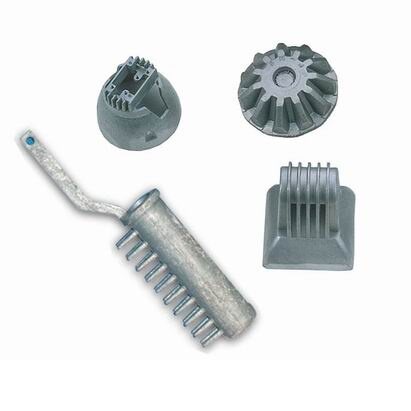E- בריוו פֿאָרמאַט טעות
emailCannotEmpty
emailDoesExist
pwdLetterLimtTip
inconsistentPwd
pwdLetterLimtTip
inconsistentPwd

נייַעס
Development History of Investment Casting Parts
The history of investment casting parts can be traced back to 4000 years ago. The earliest countries of origin are Egypt, China, and India, and then spread to other countries in Africa and Europe.

Ancient China left many fine investment castings, such as Prince Wu Ding and copper ban in the late spring and Autumn period, Zeng Houyi statue and plate in the Warring States period, copper inlaid Boshan stove and Changxin palace lantern in the Han Dynasty, and the gilded bronze statue of Mitsuo made by Dong Qin in the Sui Dynasty. The armillary sphere of the Ming Dynasty, the statue of emperor Zhenwu of Wudang, the bronze lion of Taihe gate of the imperial palace of the Qing Dynasty, etc.
In West Africa, about after the 11th century, a large number of investment castings were manufactured. In the 16th century, investment casting was widely used by artists and sculptors. The bronze statues of Perseus and Banshee leaders made by Benvenuto Cellini are one of the most outstanding works.
In the late 19th century, dental castings were produced by investment casting combined with centrifugal casting technology. In the early 20th century, to produce thicker and denser dental parts, people began to study the factors affecting the dimensional stability of wax molds and shells, as well as the solidification shrinkage properties of some metals and alloys. The materials used in investment molds were adjusted in the early 1930s. From 1900 to 1940, there were more than 400 patents in this field. Investment casting technology is also widely used in the jewelry industry.
Aeroengine Parts working in a harsh environment, such as turbochargers, can not meet the performance requirements if they use traditional alloy. In the late 1930s, it was found that the drill-based alloy developed by austenite Laboratory for surgical transplantation has excellent performance at high temperatures and can be used in turbochargers. However, this kind of alloy is difficult to process. Investment casting parts have become the forming process method of this kind of alloy. It has rapidly developed industrial technology, entered the aviation and national defense industrial departments, and quickly applied to other industrial departments.
Since investment casting was used in industrial production in the 1940s, it has been developing at a rapid speed for half a century. It is reported that in 1996, the world investment casting industry (excluding the former Soviet Union) accounted for 50% in North America, 25% in Europe, 20% in Asia, and the remaining 5%. The United States, China, and the United States account for 95%, while Europe accounts for 42% of Britain, 26% of France, 19% of Germany, 7% of Italy, and the rest 6%. In that year, the sales volume of investment casting in the United States reached the US $2.61 billion. The sales of investment casting in the United States in 1970 and 1980 were US $250 million and the US $1.1 billion respectively, that is, it was 10.4 times that in 1970 and 2.37 times that in 1980. It can be seen that the investment casting industry is developing rapidly. At present, investment casting is used in almost all industrial sectors except aviation and weapons, especially in electronics, petroleum, chemical industry, energy, transportation, light industry, textile, pharmaceutical, medical machinery, pumps, and valves.
With the development of technology, investment casting can produce not only small castings but also large castings. The outline size of the largest investment casting is nearly 2m, while the minimum wall thickness is less than 2mm. At the same time, investment castings are becoming more precise. In addition to linear tolerance, parts can also achieve high geometric tolerance. The surface roughness of investment castings is also getting smaller and smaller, which can reach Ra0 4um.
The progress of mechanization and automation has broken the old concept that the "investment casting process cannot be mechanized". Japan, Britain, and the former Soviet Union have successfully used the investment casting process to produce low-cost civil parts such as automobiles.
In short, with the development of casting technology, investment casting can produce more refined, larger, and stronger high-value products; "Precision", "large" and "thin wall" are the distinctive characteristics of modern investment casting. At the same time, investment casting has made breakthroughs in the production of low-cost parts and rapid production. All these have expanded the application of investment casting, to be in a more favorable position in the competition with other processes and have a bright prospect.
We are the leading and professional OEM investment casting parts, any interests, plz feel free to contact us.

